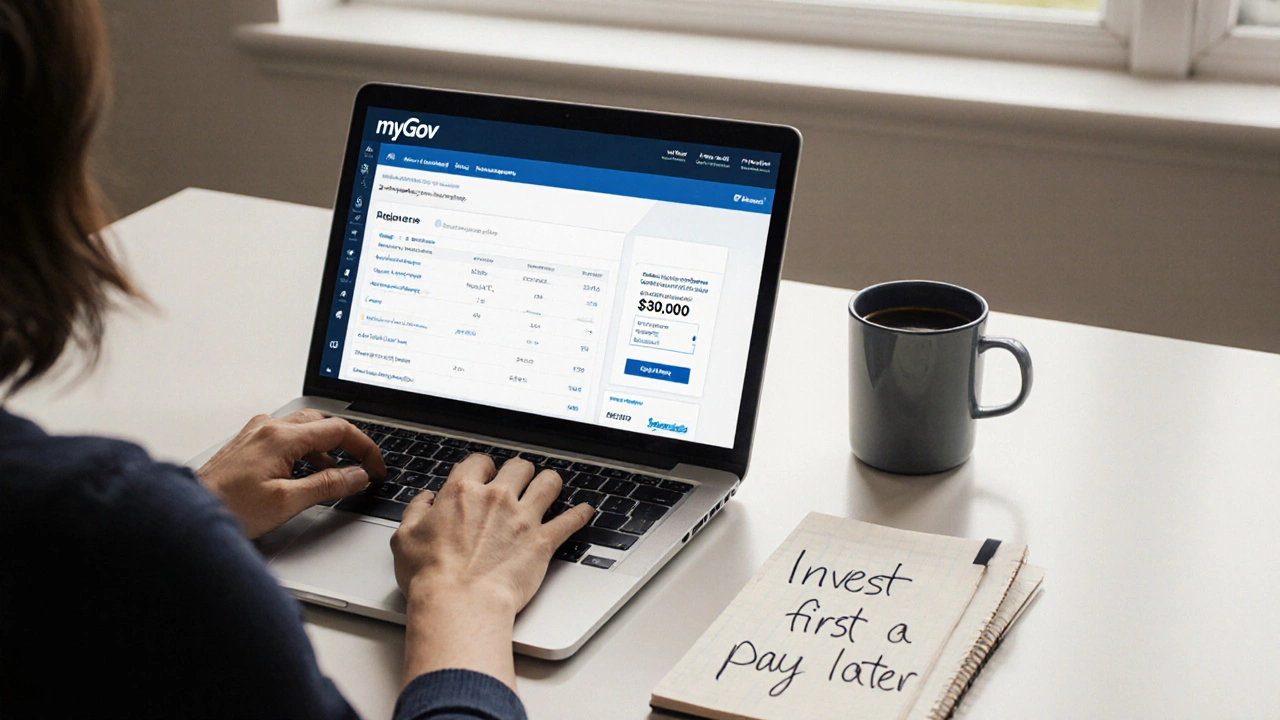Requesting debt forgiveness might seem like a daunting task, but it's an actionable route toward easing financial pressures. For many, it's not just about escaping debt but securing a fresh start. The concept is built on mutual benefits—lenders recover some value, and debtors can breathe easier.
Understanding the kind of debts eligible for forgiveness sets the stage for this journey. Not all debts are treated equally, and knowing which ones allow for leniency is crucial. Equally important is your preparation—having a full grasp of your financial standing before approaching creditors is paramount.
Crafting a compelling and sincere letter is a key step in the debt relief process. It requires honesty about your financial situation and a respectful appeal to your creditors' goodwill. Additionally, being prepared to negotiate is essential, as creditors often have their own sets of requirements and expectations.
In this guide, you'll find insights on handling these discussions with tact and strategies to increase your chances of success. With the right approach and resources, debt forgiveness is not just a distant dream, but a reachable goal.
- Understanding Debt Forgiveness
- Types of Debt Eligible
- Assessing Your Financial Situation
- Writing an Effective Request
- Negotiation Tactics
- Resources and Support
Understanding Debt Forgiveness
Debt forgiveness is a financial concept where a lender agrees to forgive a portion or the entirety of a borrower's owed debt. This arrangement typically arises when borrowers face substantial financial difficulty, making it impractical for them to meet their repayment obligations. Unlike debt consolidation, where debts are combined and restructured for easier payment, debt forgiveness results in the reduction or erasure of debt, lightening the financial load on the borrower entirely.
The eligibility for debt forgiveness often hinges on the specific type of debt and the circumstances surrounding it. For instance, student loans in some countries are sometimes eligible for forgiveness under certain conditions, such as public service employment or prolonged financial hardship. Similarly, credit card companies may offer relief if it seems unlikely that the borrower will ever be able to pay the balance in full, especially when a borrower files for bankruptcy. Each lender or creditor typically has its guidelines that dictate when debt forgiveness is a feasible option.
Debt forgiveness is not merely a goodwill gesture from creditors. It's a strategic decision based on their assessment of recovery possibilities. Creditors may determine that it's better to recover at least part of the owed money than to engage in lengthy legal processes that might result in zero recoveries. Debt forgiveness also impacts a borrower's credit score, often showing as an account settled for less than owed. This action can stay on credit records for up to seven years, affecting the borrower's ability to obtain credit in the future.
The intricate dynamics of debt forgiveness often involve negotiation skills, where the borrower or their representative must present their case comprehensively. It's essential to provide documentation that justifies the financial hardship and pursue open, honest communication with creditors. Financial advisors often recommend taking detailed preparatory steps before requesting forgiveness, such as clearly understanding your total financial picture, gathering proof of income loss, and exploring alternative payment arrangements first.
"Debt forgiveness can be a viable option for those in overwhelming financial situations, but it requires strategic preparation and honest communication," says Alison Greene, a renowned financial advisor.The emotional toll of carrying unmanageable debt can affect mental and physical health, and exploring forgiveness options might be the relief that hundreds seek. Knowing the ins and outs gives individuals the confidence to approach this daunting task with clarity and hope. The financial landscape is constantly evolving, with new tools and policies emerging; staying informed is key to navigating debt issues successfully. With the right approach, debt forgiveness can be the first step towards financial renewal and stability, offering a fresh start to those strained by their financial burdens.
Types of Debt Eligible
When diving into the realm of debt forgiveness, it's crucial to understand which types of debts can potentially be forgiven. This awareness provides a solid groundwork for addressing your financial challenges. In the world of personal finance, not all debts can be swept away with a simple brush stroke, but several key categories often qualify for forgiveness in certain conditions or under various programs.
First on the list are federal student loans. The U.S. Department of Education offers multiple forgiveness programs for borrowers who meet criteria such as working in public service jobs or teaching in low-income areas. Known initiatives like the Public Service Loan Forgiveness (PSLF) program can grant relief after ten years of qualifying payments. These options are designed to encourage borrowers to contribute positively to society while alleviating long-term debt burdens. Debt relief for student loans serves not just as financial support but also as a motivator for public service.
Credit card debt is another area that might see forgiveness, though the process can be more complex and requires negotiation directly with creditors. Credit card companies may agree to settle for less than what’s owed, especially in scenarios where borrowers demonstrate sincere financial distress. These negotiations often involve a lump-sum payment, which satisfies the debt partially but closes the account with remaining balances written off. This kind of financial negotiation demands patience, careful planning, and sometimes professional help like credit counselors.
Mortgage debt relief comes into play, particularly during widespread economic downturns. Programs are sometimes established to help homeowners avoid foreclosure by reducing loan balances or modifying loan terms. For example, in response to economic crises, governments may intervene to provide assistance to homeowners, helping them stay in their homes while managing a sustainable repayment plan. This type of debt forgiveness often requires both documentation of financial hardship and successful navigation through bureaucratic processes.
Finally, tax debt can also be subject to forgiveness under specific circumstances, known as Offer in Compromise (OIC). This is where the IRS might settle for less than the full amount owed if it's deemed impractical to expect full payment within a reasonable time frame. According to the IRS, this option is available under very particular guidelines, making it essential for taxpayers to ensure proper documentation and compliance to qualify. "It’s not a free pass," explains a tax advisor, "but a genuine way to resolve outstanding liabilities when your financial reality cannot support full repayment."
Understanding these categories and pursuing forgiveness with informed decisions can not only alleviate immediate stress but pave the way for long-term financial stability. Whether through government initiatives or direct negotiation, knowing your options is the first step in achieving the debt relief you seek.

Assessing Your Financial Situation
Before you take the leap toward requesting debt forgiveness, it's essential to have a crystal-clear picture of your financial landscape. Many people skip this step, rushing headlong into discussions with creditors without understanding their own fiscal standing, which can lead to miscommunication and unmet expectations. Begin by gathering all of your financial documents – pay stubs, bank statements, loan agreements, credit card bills, and any other relevant paperwork. This helps you create a comprehensive snapshot of your income versus your expenses.
Once you've gathered your documents, break them down. Firstly, calculate your monthly income. Be sure to include all sources - this could be your salary, a part-time side hustle, or any passive income from investments. Next, list out all your fixed and variable expenses. Fixed expenses usually include rent or mortgage, utilities, insurance, and other regular payments. Variable expenses can be anything like groceries, dining out, and entertainment. The goal here is to understand the difference between your income and your expenses.
A practical approach is to categorize your expenses. By identifying areas where spending can be minimized, you may find potential savings you hadn't considered. For example, if dining out constitutes a significant portion of your expenditure, opting for home-cooked meals could bring down costs substantially. Creating a budget might sound clichéd, but it can be a game-changer in managing your finances.
Reflect on any past financial decisions and habits. Have you relied heavily on credit cards for essentials, or have there been instances where you defaulted on payments? Understanding these will help not only in asking for forgiveness but also in demonstrating to creditors that you are committed to improving your financial health. It’s about showing responsibility and building trust.
As financial guru Dave Ramsey says, "Act your wage," which can serve as a motivational kick to align your spending with your actual financial abilities.
Consider using tools like personal finance apps that can provide tailored insights into your spending habits. These apps often offer a breakdown of expenditure, net worth tracking, and financial goals, which can be immensely helpful. In fact, utilizing a budgeting tool can help you identify 'financial leaks' that contribute to your debt.
Lastly, if you're feeling overwhelmed, seek the guidance of a financial advisor. These professionals can offer personalized advice and strategies, tailoring solutions that fit your unique situation. While hiring an advisor involves a cost, the value they can provide in long-term debt management and financial planning might outweigh the initial investment. Remember, an organized financial overview not only aids in the current pursuit of debt relief but also paves the way for healthier financial habits moving forward.
Writing an Effective Request
Creating a letter that persuades creditors for debt forgiveness is an art. The first step is knowing your goals and assessing what you can realistically request. It's crucial to convey your intentions and sincerity. Begin with a formal but friendly salutation to set the tone. The opening paragraph should clearly state your request for debt relief and briefly touch upon your financial hardships. Explain that life events, like sudden illness or job loss, have impeded your ability to meet payment obligations.
Providing a detailed account of your financial status is vital. List your income sources and monthly expenditures meticulously. Compile comprehensive data reflecting your inability to maintain regular payments—be transparent yet concise, for honesty can foster goodwill. Acknowledge past efforts to honor financial commitments. Highlight attempts to cut expenses or garner additional income, illustrating your resolve to mitigate the situation independently.
Presenting Your Case
Include any relevant documentation that supports your claims. Employ figures and facts—like a descriptive breakdown of your monthly budget—to establish legitimacy. For deeper impact, attach supporting documents such as medical bills or termination letters. Despite common belief, creditors appreciate visual evidence when considering debt relief. If fortunate, you may reference others who successfully received forgiveness through similar circumstances, although anonymization is critical.Connecting emotionally with the reader can cement your request, but avoid manipulation. Express gratitude for the creditor's understanding and patience during this troubling period. End your correspondence graciously, inviting further communication if there are questions or requirements. A respectful request not only improves chances but builds bridges for future dealings.
"The most effective appeals come from the heart, where honesty and transparency are paramount."—Susan T. Helms, Financial Counselor
Structuring the Request
Consider structuring your letter with headings, similar to composing an article. Utilize subheadings to delineate sections for context, such as 'Financial Situation' or 'Reasons for Request'. This clarity aids the reader and streamlines your communication. When listing financial figures or personal commitments, prefer tables for ultimate clarity.| Income Source | Amount |
|---|---|
| Salary | $2,500 |
| Gig Work | $500 |
In closing, remember patience is a virtue. It may take weeks or even months to receive a response or decision. Stay proactive in your approach, and don't hesitate to follow up respectfully after a significant period. By maintaining an open line of communication, you not only stand a chance of achieving debt forgiveness but may also garner helpful advice for greater financial stability.

Negotiation Tactics
Negotiating for debt relief requires a mix of patience, preparation, and the willingness to adapt. It's not just about correcting a financial burden but building a dialogue that could lead to a mutually beneficial agreement. Begin by thoroughly understanding your debt profile and the creditor you're dealing with. Each creditor has a unique process and flexibility range, driven by internal policies and external regulations. Knowledge is power; do your homework on any past cases similar to yours, which can offer insights or angles you hadn't considered.
When you initiate contact, clarity and honesty become your best allies. Clearly articulate your current financial situation while emphasizing your commitment to fulfilling your obligations under more feasible terms. Having a budget plan showing how you intend to adhere to a revised payment schedule can strengthen your case. Use this opportunity to propose solutions, be it a reduction in principal, interest rate adjustments, or extended deadlines. Practice these conversations with a friend or confidant to gain confidence and identify areas where your approach could be sharpened.
During negotiations, staying calm and composed is crucial. Emotions can cloud judgment, so it's vital to separate personal stress from professional discourse. If circumstances permit, it may be wise to have these discussions in written form, which allows for clearer communication and creates a record of what's agreed upon. However, if voice conversations occur, follow up in writing to confirm any agreements reached. For substantial debts, seeking legal advice or enlisting a mediator could enhance your leverage.
Positivity and Patience
Patience is indispensable when it comes to negotiating debt forgiveness. Creditors may initially decline your requests, and negotiations might require several rounds. During these interactions, maintaining a positive and respectful attitude can open doors that force won't. Attempting to understand the creditor's position as well can sometimes reveal shared interests that can be leveraged. A fruitful negotiation emerges from compromise—persistent, amicable dialogue often yields better outcomes than chasing unrealistic demands.
| Step | Action |
|---|---|
| 1 | Research your creditor and understand their policies and precedents. |
| 2 | Document and communicate your financial situation clearly. |
| 3 | Propose feasible solutions and be ready to adapt negotiations. |
| 4 | Consider professional advice for high-stakes negotiations. |
| 5 | Follow up in writing to confirm any verbal agreements. |
Finally, remember to celebrate small victories. Each step closer to a manageable debt arrangement is a step towards financial ease. Reflect on the process to learn and better prepare for future financial management challenges. As financial columnist Michelle Singletary once said,
"Courage to manage your personal finances can be transformative; it starts with small but firm steps towards debt clarity and forgiveness."Let this become a blueprint for future financial resilience.
Resources and Support
Tapping into the right resources and seeking support is crucial as you navigate the complex world of debt forgiveness. Many find themselves overwhelmed with where to begin, but knowing where to look can make a huge difference. One valuable resource is non-profit credit counseling agencies, which offer expert guidance on budgeting, consolidating debts, and negotiating with creditors. These agencies often provide advice free of charge or at minimal cost.
Another vital resource is government programs that are made available to assist individuals in financial difficulty. These programs can offer various forms of debt relief depending on your specific situation, ranging from student loan forgiveness plans to mortgage assistance programs. Additionally, there are online platforms and forums where people share their experiences and provide mutual support. Engaging with these communities can offer not only practical advice but also emotional assurance during your financial journey.
For those with specific types of debt, seeking legal advice can be beneficial. Lawyers specializing in bankruptcy and debt law can provide insights into whether filing for bankruptcy might be a viable option, as well as negotiate directly with creditors on your behalf. It's also wise to keep up with personal finance publications and websites that regularly update readers on new relief programs or changes in legislation.
"Empower yourself with knowledge," advises Jane Bryant Quinn, a renowned personal finance commentator. "Understanding your rights and the programs available to help you is half the battle won."
Online calculators can play a crucial role when assessing your financial situation, projecting different repayment scenarios, and enabling you to make informed decisions about debt management. Don't overlook the power of community support groups where individuals like you exchange tips and strategies based on real-life experiences. Many find these groups a source of comfort and motivation as they work toward financial freedom. Here's a factual data point to note: According to a recent survey by the National Foundation for Credit Counseling, 47% of respondents said they would benefit from meeting with a professional or educator about their money situation, highlighting the need for accessible resources and expert support.



